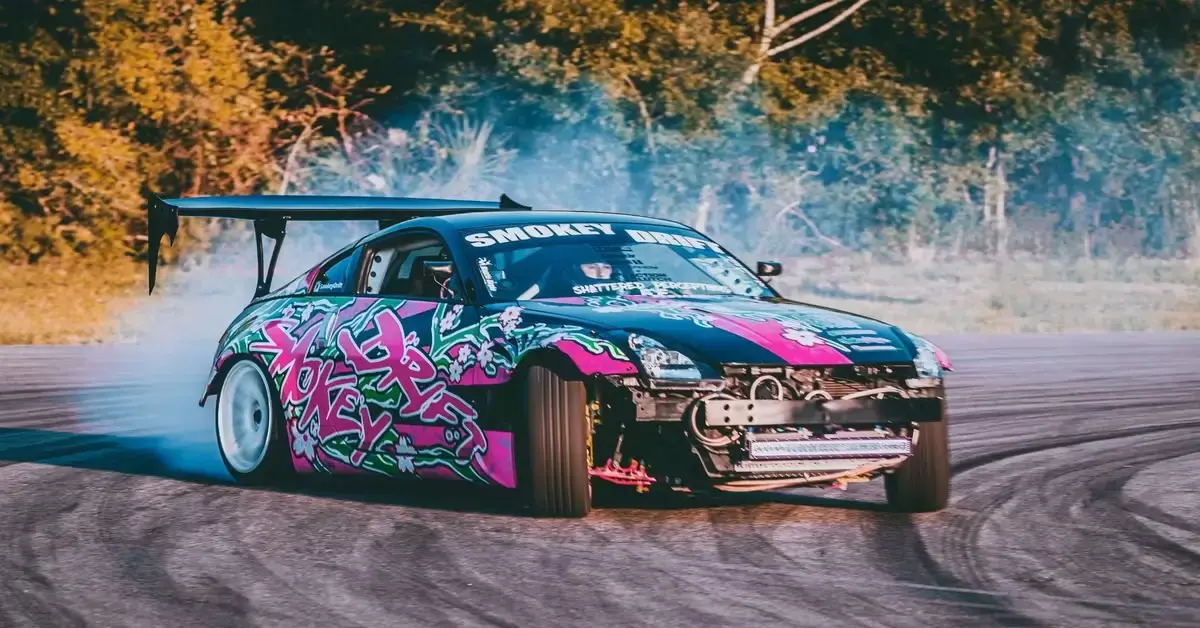 This guide lists the best drift cars that are affordable, rear-wheel drive, and easy to modify — whether you're learning the ropes or building a competition car.
This guide lists the best drift cars that are affordable, rear-wheel drive, and easy to modify — whether you're learning the ropes or building a competition car.
What to look for in a drift car
- Rear-wheel drive (RWD) — easier to control slides.
- Good weight balance — predictable handling helps learning.
- Strong aftermarket support — parts and advice are cheap and easy to find.
- Simple drivetrains — fewer complex systems to break on track.
Top Drift Cars (Beginner → Pro)
1. Nissan Silvia / 240SX (S13, S14, S15)

Why: The Nissan S-Chassis is one of the most iconic drift platforms ever made. Its lightweight rear-wheel-drive layout, balanced chassis, and massive aftermarket support make it perfect for both beginners learning the basics and pros building competition-level machines. These cars are simple to work on, easy to modify, and can handle everything from mild street drifting to full-blown track abuse. If you're exploring affordable project cars for your first build, the 240SX represents the gold standard for drift-focused platforms. Plus, nearly every part you can imagine — from suspension arms to full engine kits — is available off the shelf.
Common Engines: SR20DET, KA24DE, RB25DET, 1JZ/2JZ engine swaps, and even LS V8 conversions for big power builds.
Beginner Mods: Quality coilovers, a proper limited-slip differential (LSD), hydraulic handbrake, angle kit, upgraded bushings, and basic cooling upgrades.
Pro Upgrades: Big-turbo setups, forged internals, standalone ECU tuning, full roll cage, motorsport-grade suspension, and wide-angle steering kits for competition drifting.
Tip: S-Chassis cars are legendary because they teach car control better than most platforms. They're affordable to get into, easy to maintain, and replacement parts are everywhere. Whether you're learning your first clutch kick or building a missile car, the S-Chassis is hard to beat.
2. Mazda MX-5 / Miata (NA / NB)

Why: The Mazda MX-5 Miata is one of the most beginner-friendly drift platforms ever made. Its lightweight chassis, front-engine/rear-wheel-drive setup, and perfect 50/50 balance make it incredibly predictable and forgiving, especially for new drivers learning to control slides. Even with low power, the Miata teaches the fundamentals—weight transfer, throttle control, and smooth steering inputs—before you bolt on more horsepower later.
Common Engines: 1.6L and 1.8L naturally aspirated engines (NA & NB models), with a wide range of aftermarket turbo and supercharger kits available. Popular swaps include BP-Turbo setups, K-series swaps, and even V8 conversions for extreme builds.
Beginner Mods: Stiffer anti-roll bars, a proper limited-slip differential (LSD), upgraded brake pads, slightly wider tyres, and improved brake bias adjustment. Understanding suspension modifications and coilover systems makes a huge difference to handling response and predictability.
Pro Upgrades: Turbo kits, standalone ECU tuning, upgraded differentials, adjustable suspension arms, high-angle steering kits, big brakes, chassis bracing, and reinforced cooling systems for track use.
Tip: Miatas are cheap to run and easy to fix, which makes them ideal for learning mistakes without breaking the bank. Master throttle control and counter-steering here first—once you get smooth in a Miata, drifting any higher-powered car becomes much easier.
3. BMW 3 Series (E36 & E46)
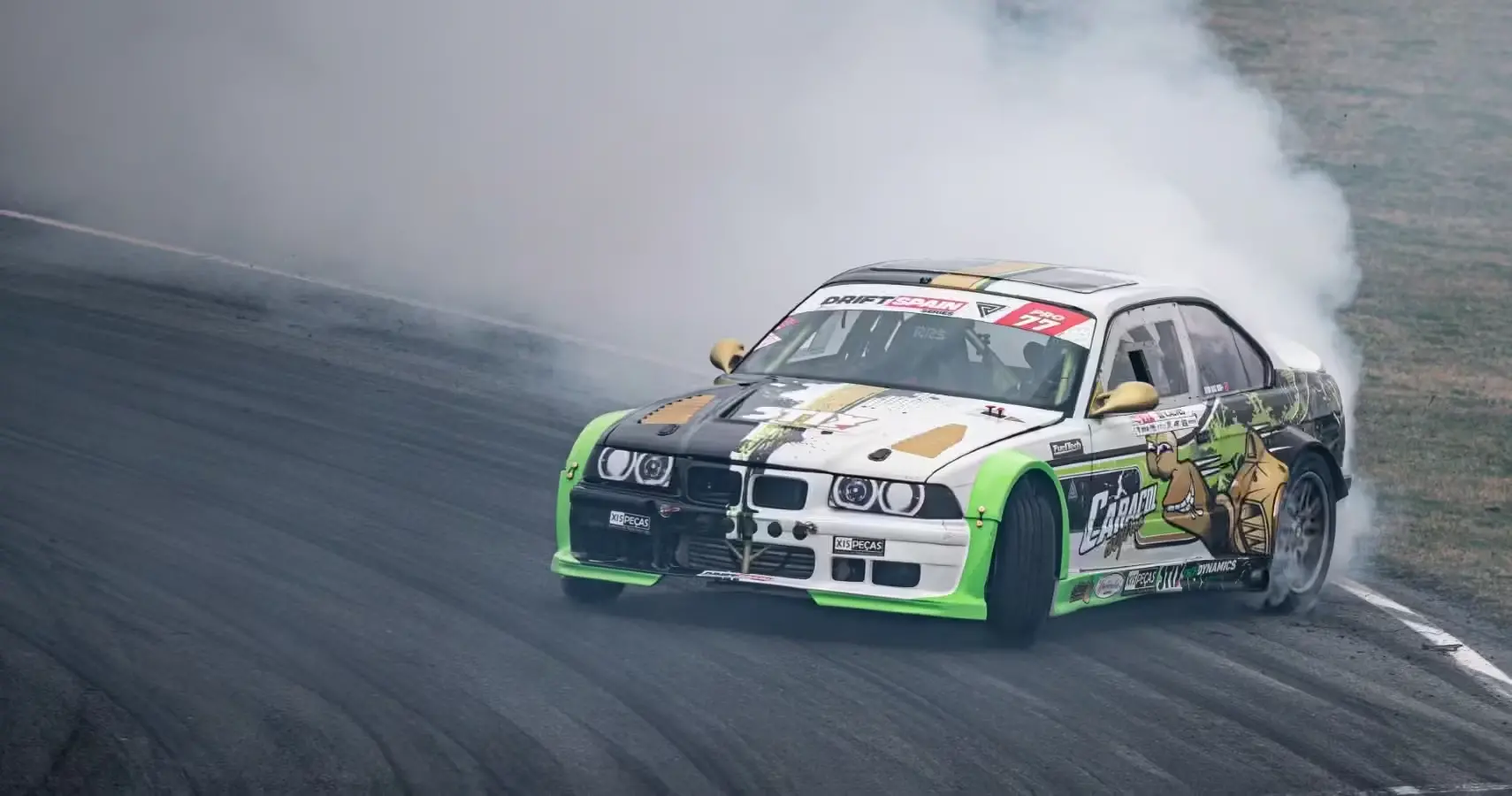
Why: The BMW E36 is a legendary drift platform thanks to its strong chassis, smooth straight-six engines, and easy access to LSD-equipped rear ends. It's a car that feels stable at speed but still playful enough to throw into corners, making it perfect for anyone wanting a machine that can handle daily driving, weekend drifting, and full track setups. With its balanced weight distribution and responsive steering, the E36 transitions cleanly and gives drivers plenty of confidence as they progress from beginner to advanced drifting.
Common Engines: M50, M52, and M54 straight-sixes are the most popular, offering a great mix of reliability and tunability. Enthusiasts often upgrade to S50 or S52 engines for more power, and turbocharging the M5X engines is common for serious drift builds.
Beginner Mods: Quality coilovers to tighten up body control, upgraded control arms and bushings for sharper steering response, a welded diff or simple LSD upgrade, basic cooling improvements, and reinforced rear subframe mounts (a known weak point).
Pro Upgrades: High-power engine tuning, turbo kits, standalone ECUs, full track-spec suspension, angle kits, lightweight flywheels, upgraded clutches, big-brake kits, and even sequential gearboxes for ultra-fast shifting on technical tracks.
Tip: Rust can make or break an E36 drift build. Always try to buy the cleanest, most solid shell you can find—your future self will thank you when fitting suspension, reinforcing mounting points, and avoiding costly structural repairs.
4. Nissan 350Z / 370Z
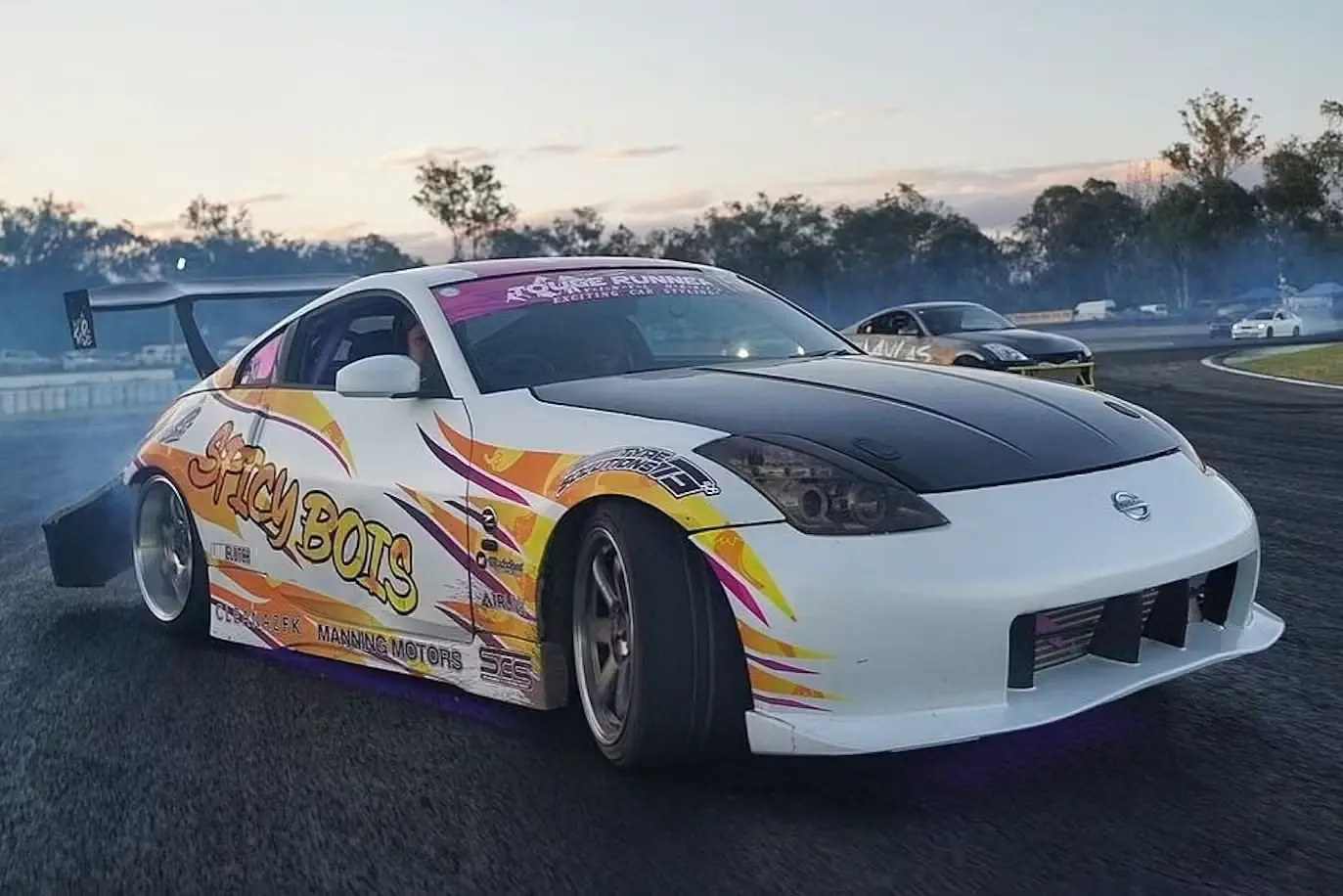
Why: The Nissan 350Z and 370Z are drift-ready machines thanks to their torquey VQ engines and chassis that naturally wants to rotate. Their rear-wheel-drive layout, near-perfect weight balance, and stiff factory suspension make them excellent for mid- to high-speed slides. They're a step up from lighter beginner cars, letting drivers explore faster corners and higher-speed transitions while still being predictable enough to learn proper throttle and steering control.
Common Engines: VQ35DE (350Z) and VQ37VHR (370Z), both smooth, reliable, and capable of handling forced induction. Popular engine swaps include turbocharging or supercharging for significant power gains, while the naturally aspirated variants are perfect for beginners wanting to learn car control without overwhelming power.
Beginner Mods: Upgrade the hydraulic handbrake for tighter, controlled slides, fit basic coilovers or suspension refresh kits for improved handling, and install a quality limited-slip differential (LSD) to ensure the car rotates predictably in corners.
Pro Upgrades: Full diff rebuilds with higher-stress internals, high-horsepower turbo kits, reinforced engine and transmission mounts, upgraded cooling systems, and chassis bracing for serious track or competition builds.
Tip: Both the 350Z and 370Z come with strong brakes and factory cooling systems, which make them excellent bases for higher-powered drift builds. Properly maintained, they can handle significant upgrades while remaining reliable for street and track use.
5. Toyota GT86 / Subaru BRZ / Scion FR-S

Why: Modern, lightweight chassis engineered for balance and driver feedback. Easy to modify, highly tunable, and famously predictable at the limit — ideal for learning car control and pushing your skills safely.
Common Engines: FA20 naturally aspirated, plus popular FA24 turbo or swap options for more power.
Beginner Mods: Quality coilovers, basic alignment tweaks (more camber up front helps turn-in), uprated pads/fluids, and a simple handbrake mod for better rotation.
Pro Upgrades: Turbo or supercharger kit, full weld-in or bolt-in roll cage, competition clutch and flywheel, upgraded diff, and motorsport-grade suspension arms.
Tip: These cars reward smooth, deliberate inputs. Master the flow and you'll build technique faster than with almost any other platform.
6. Lexus IS200 / IS300
Why: Built on a solid, over-engineered chassis with classic Toyota reliability. The platform's compatibility with 1JZ and 2JZ engines — including the surprisingly capable 2JZ-GE — makes these cars underrated sleeper drift machines with huge tuning potential.
Common Engines: 1JZ, 2JZ (various swap options), and the factory 2JZ-GE.
Beginner Mods: Proper LSD, upgraded suspension components, improved cooling system, fresh bushings, and basic brake upgrades.
Pro Upgrades: Turbo conversions, strengthened or welded diff, standalone or race-spec ECU, angle kit, and reinforced drivetrain mounts.
Tip: Check the condition of the suspension mounting points — older IS models can develop wear here, and addressing it early keeps the chassis tight and predictable.
7. Ford Mustang (SN95 / S197)
Why: Huge V8 torque, a massive aftermarket, and a surprisingly capable chassis when properly sorted. With the right suspension setup and weight-transfer tuning, Mustangs become genuinely impressive drift platforms — far more balanced and controllable than their size suggests.
Common Engines: 4.6L modular V8 and the widely-loved 5.0 Coyote.
Beginner Mods: Rear subframe bracing to tighten the chassis, upgraded suspension components, improved brake bias for better control, and fresh bushings.
Pro Upgrades: Aggressive V8 tuning, limited-slip or upgraded diff, full roll cage, angle kit, and lightweight wheels/brakes to reduce unsprung mass.
Tip: Mustangs are on the heavier side — dial in suspension geometry and focus on weight balance. Get that right, and they slide with surprising precision.
8. Toyota Corolla AE86
Why: Lightweight, perfectly balanced, and iconic for a reason — the AE86 is a momentum car that rewards precision and driver skill far more than brute power. Its playful chassis and razor-sharp feedback make it one of the best platforms for learning true car control.
Common Engines: 4A-GE (various variants), often built for reliability and high-rev response.
Beginner Mods: Quality coilovers, a proper LSD, steering angle kit, upgraded brakes, and fresh bushings to tighten up the aging chassis.
Pro Upgrades: High-rev engine builds or modern engine swaps, full roll cage, custom suspension geometry, lightweight panels, and motorsport-grade driveline components.
Tip: AE86s are becoming rare and expensive, but the driving experience is unmatched — they teach balance, momentum management, and pure driver input better than almost anything else.
9. Infiniti G35 Coupe

Why: Shares much of its DNA with the 350Z but often comes at a lower price point. The G35 offers a comfortable, refined interior paired with a strong chassis and a deep aftermarket — making it one of the best-value drift platforms for beginners and budget-conscious builders.
Common Engines: VQ35DE, known for solid mid-range torque and strong reliability when maintained.
Beginner Mods: Coilovers for better control, a proper LSD, upgraded engine and transmission mounts, and improved cooling for long drift sessions.
Pro Upgrades: Forced induction setups (supercharger or turbo), upgraded or welded diff, motorsport-grade brakes, angle kit, and strengthened suspension arms.
Tip: G35s are ideal for drivers who want comfort and power rolled into one — a smooth daily that transforms into a capable drift machine with the right setup.
10. Budget & Sleeper Picks
Not everyone wants the typical "drift starter pack" car. If you're hunting for something sleeper-ish, budget-friendly, or just different from the crowd, these underrated platforms can deliver big smiles with simple mods:
Ford Sierra / Escort Cosworth – Where available, these older rear-drive Fords offer classic chassis balance, rally heritage, and plenty of sideways fun. Parts can be niche, but the driving feel is worth it.
Lexus GS300 – Big, comfy, and built on a strong Toyota chassis. The 2JZ-GE engine is tough, smooth, and responds well to boost or swaps. Think luxury cruiser by day, drift barge by night.
Older Rear-Drive Mercedes – Heavier than the usual drift choices, but incredibly predictable once you stiffen the suspension and sort the diff. Rock-solid reliability and unique style make them great sleepers.
Tip: Budget builds teach resourcefulness — hunt for cheap parts, learn to adapt what you have, and you'll gain more mechanical skill (and better car control) than you ever would by throwing money at a flashier platform.
Beginner Checklist: First Mods to Learn Drifting
- Install a limited-slip differential (LSD) or welded diff for predictable slides.
- Fit adjustable coilovers for ride height and camber tuning.
- Upgrade to a reliable handbrake (hydraulic if possible).
- Improve tyres and brake balance—good rubber matters more than power.
- Check and reinforce suspension mounts and subframes for safety.
Safety & Maintenance Tips
Drifting puts stress on the whole car. Keep these things in check:
- Regularly check suspension, steering, and wheel bearings.
- Keep a simple roll cage or harnesses if you plan on competing.
- Monitor oil and coolant temperatures on track days.
- Use quality brake pads and replace tyres before they become dangerous.
Final thoughts
Pick a car that matches your budget and learning goals. Whether you're installing forced induction systems or keeping things naturally aspirated, start simple, learn car control, and upgrade steadily. The most fun drift builds are the ones you drive, maintain, and improve yourself.



